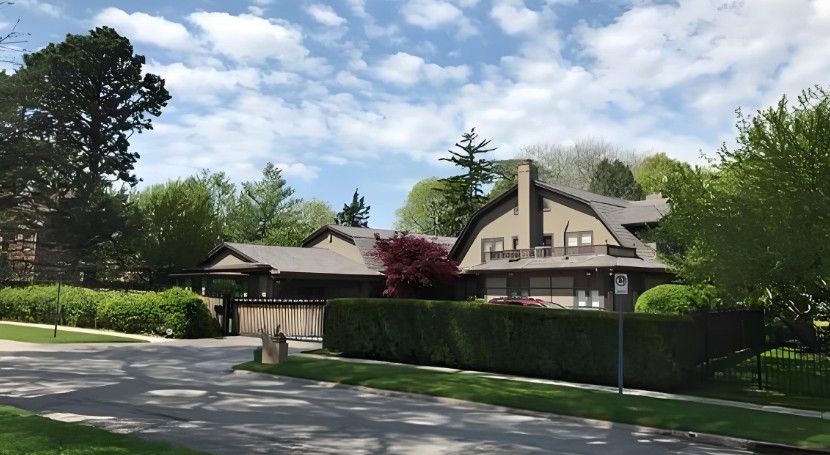December 2, 1966
To the Stockholders of Berkshire Hathaway Inc.:
For your information, we have highlighted the financial information for fiscal 1966 in comparison with the five preceding years on the facing page.
In this letter we will discuss in some detail the following areas:
1. Operating Conditions-1966
2. Survey of Operations 1961-1966
3. Maintenance of Financial Condition
4. Dividends
Operating Conditions-1966
The negative factors, which prevailed in the last quarter of our 1966 fiscal year, contributed to our decision to avoid inventory buildup by shutting down the Box Loom and Synthetic Divisions in New Bedford for the week of October 9, 1966. Inasmuch as the textile market has not, at this writing, shifted to a more active level, further cutbacks in production may be necessary to avoid inventory buildup.

New Products
The growth of our Home Fabrics Division over the past few years is, in large part, due to our development of both new products and new application of old products. In the past year, we have increased our expenditures for development so as to provide fabrics that will yield more stable prices and volumes.
Labor
In early 1966, we signed a contract with the Textile Workers Union of America AFL-CIO for three years ending April 15, 1969. This contract covers wages and benefits with no reopening clause.
Plant and Equipment
We have spent approximately $970,000 for purchase and installation of new equipment in order to lower costs, improve quality, and increase our manufacturing flexibility.
During fiscal 1966, we disposed of the remainder of our unused property.
Survey of Operations October 1, 1960 - October 1, 1966
The benefit to the present stockholders of this program of share repurchases is indicated, in part, by the fact that net worth per share of the Company's outstanding common stock on October 1, 1966 was $28.99, compared with $23.37 six years previously.
In the year ended October 1, 1960, our sales totaled $62.6 million, whereas in 1966, they totaled $49.4 million, a decrease of approximately 21%. This corresponds to the 22% decrease in total net worth. The fact that the Company is now achieving approximately the same net worth turnover as existed at the beginning of this six-year period is again some indication of the restoration of its strength.
Maintenance of Financial Condition
It has always been among the goals of Berkshire Hathaway to maintain a strong financial condition. Indeed, it has been this practice that has enabled the Company to survive in the light of the highly cyclical nature of its business. The present strength of the Company's financial condition is demonstrated by its $23,158,187 of working capital at October 1, 1966. This figure is about equal to the Company's working capital on October 1, 1960 although on a per share basis, because of the reduction in the number of shares through repurchasing, our working capital is now $22.76 compared with $14.41 six years ago.
In addition to the cyclical nature of our business, there are other reasons why a strong financial condition is advisable. As you have been advised previously, the Company has been searching for suitable acquisitions within, and conceivably without, the textile field. Although to date none has been successfully concluded, we continue to have an active interest in such acquisitions. The present state of the money market, in which funds are virtually unobtainable for acquisition purposes, makes it imperative that we have available the liquid assets with which to consummate such acquisitions, should the hoped-for opportunities present themselves. Present uncertainties such as war, tax rates and decreased level of business activity also all combine to emphasize the continuing need for a strong financial condition.
A second area in which substantial investment may be necessary is our fast-growing Home Fabrics Division. Home Fabrics' sales have nearly doubled in the past three years. Should a corresponding increase be attained in the coming years, we may be called upon to invest up to $7 million in additional inventory and receivables.
It is these considerations which caused the Company at year end to include in its working capital $5.4 million of marketable securities, composed of short-term municipal bonds, commercial paper and common stock. Because of the uncertainties in knowing when the Company may be called upon to produce substantial sums of cash, and the possibility that this might not occur for a considerable period of time, your directors have felt that we should be as zealous to achieve a realistic return on this portion of our capital as we are on the other funds that are at the time invested in plant, inventories, receivables, etc. Accordingly, it is the present intention of the directors to proceed toward the interim investment of a major portion of these funds in marketable common stocks. This should hold promise not only of greater income than can be achieved through alternative investment possibilities in the field of non-equity marketable securities, but also provides us with the opportunity to participate in earnings derived outside of our textile business, even if only temporarily and indirectly.
Dividends
The directors have declared a cash dividend of ten cents per share payable January 15, 1967 to stockholders of record January 1, 1967. This is the first cash dividend paid by the Company since 1945. The decision to pay a dividend was based on a number of factors, including the desire to provide a return to shareholders who may wish to retain their investment in the Company and the belief that the Company has reached a point where it can continue to grow and prosper without the need for retaining all of its earnings.
We believe that the Company's future growth will be enhanced by the continuation of a sound financial position and the maintenance of a strong working capital position. We will continue to seek suitable acquisition opportunities and to manage our operations efficiently in order to maximize shareholder value.
Sincerely,
Warren E. Buffett
